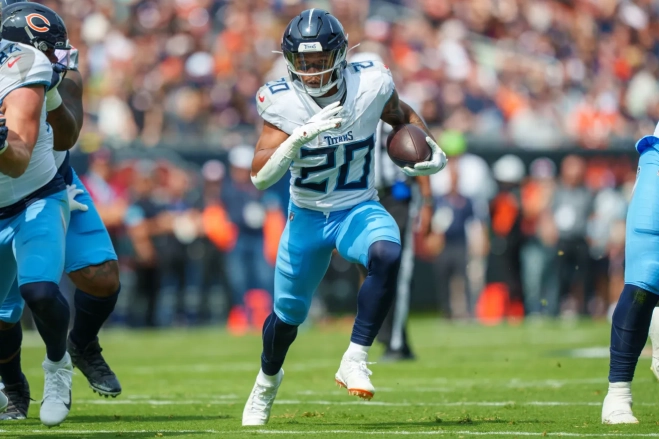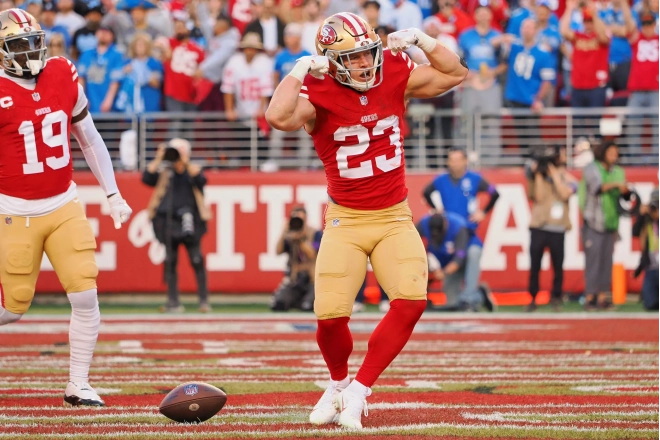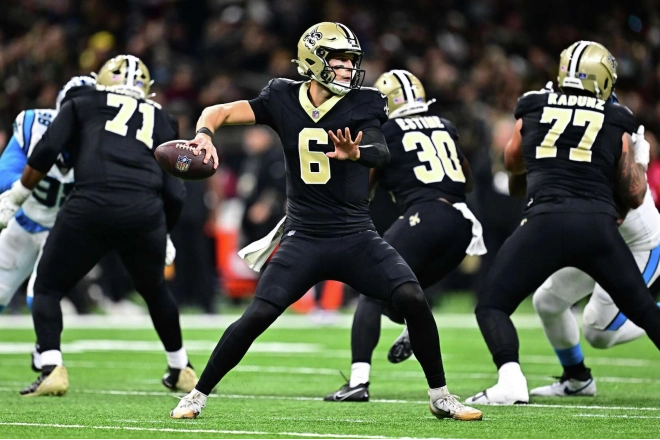One of the most important positions in the NFL is that of the running back. On offense they receive handoffs from the quarterback to rush the ball, line up as a receiver to catch the ball, and serve as a temporary blocker if the QB is pressured. There are usually one or two running backs on the field depending on the NFL offensive formation. No position in American football can perform his duties successfully without the help of other players. To successfully gain yardage, running backs need good blocking from the offensive line and the from the quarterback to take some offensive pressure off the rusher with timely throws.
How Many NFL Running Back Types Are There?
Characteristics such as their function on the field, their size and their strength are used to differentiate between types of running backs during the NFL draft scouting process.
Over the history of the game four (4) main rushing positions have been created: halfback (HB), tailback (TB), fullback (FB) and wingback (WB). The positions are often thought of as the same, but each has its unique characteristics.
Halfbacks (HB)
https://twitter.com/WillBrinson/status/919689452561354753
The halfback is one of the most important players. The HB can be considered the classic running back, a rusher that stands by the side of the quarterback and carries the ball on most plays and in certain situations he can morph into a receiver on short pass plays. The halfbacks began each play side by side and “halfway” back behind the offensive line.
While good blocking is a requirement, the NFL halfback is usually smaller than the fullback, this limits their blocking ability. The HB compensates for a lack of size by being really fast or really nimble/agile to make plays. Halfbacks can escape tackles and leave defensive players behind in abundance. The halfback is the most celebrated of the running back positions. Examples of halfbacks in NFL history are Le'Veon Bell and Emmitt Smith.
Tailbacks (TB)
The tailback position is often mistaken for the halfback. The differentiation between the two in is their difference in positioning.
Halfbacks can be positioned anywhere near the quarterback, whereas tailbacks are supposed to line up directly behind the center with the QB and fullback forming a T-shape on the field.
https://twitter.com/KevG163/status/1613996840021807105
Tailbacks are usually smaller, faster players than fullbacks. These fast, agile, and elusive running backs struggle to gain short yardage when the defense is compact and expecting a run. The fullback and center move bodies out of the way to minimize contact and create a lane for the tailback. A halfback would play towards contact with less blockers.
Only a rusher with a versatile profile can play tailback in the NFL, as this position functions to fill spaces where they are needed for different plays.
Fullbacks (FB)
These days players of this ilk rarely carry the ball. Fullbacks are known less for speed and agility and more for their power and ability to shed tackles. The modern fullback showcases the evolution of the game away from being a run centered sport towards being a dynamic passing game. Fullbacks used to be the power element of most rushing offenses in the NFL, these days it is more common to see them using that tackle breaking power assisting offensive linemen block potential defenders before they reach the ball carrier, who is often the halfback.
The NFL used to be a run-oriented league with a focus on methodically bringing the ball up the field, in this era the fullback was king. Many of the great runners in the history of the NFL have been fullbacks, including Jim Brown, Marion Motley, Bronko Nagurski, Jim Taylor, Franco Harris, Larry Csonka, John Riggins. As the league has shifted towards the pass and the 3-yard-and-a-cloud-of-dust carries FBs are popular for have drastically decreased. The modern fullback is not the primary ball carrier of the offense but rather a feature back meant to fill in gaps and make the occasional play.
In the modern age, an “every-down” fullback has to have a combination of running ability, pass-catching ability, and blocking ability. The "every-down" designation in the NFL comes from the FB’s ability to perform important functions beyond rushing on the ever-increasing number of passing plays such as receiving the ball and pass-blocking for their quarterback. Examples of fullbacks who play the new age hybrid running–blocking–pass-catching role include Vonta Leach, Mike Alstott and Kyle Juszczyk.
https://twitter.com/brgridiron/status/1175883237899624455
Wingback (WB) / Slotback (SB)
A wingback/slotback lines up off the line of scrimmage, generally a step behind and outside of a tight end. The "slot" is the area between the offensive tackle and the wide receiver. A player who lines up between those two players and behind the line of scrimmage fills that "slot" as the slotback. It is a versatile position, as the wingback/slotback may be called upon to block, take a handoff, or run downfield for a pass. There are no players whose specific position is wingback or slotback. Rather, different athletes with different skills and body types can play the position depending on what is needed in each play. These backs often go in motion for NFL teams, running behind the line of scrimmage to make plays or as disguised runners.
https://twitter.com/EaglesXOs/status/918224339417419777
An example of a formation that uses a wingback is the single-wing.
There are few contemporary college football or professional football teams that use the wingback position. Historically, Johnny Rodgers of Nebraska played as a wingback when he won the Heisman Trophy in 1972, a specialist pass receiver and running back. Rodgers broke virtually every offensive team record, was twice named to the College Football All-America Team and won the Walter Camp Award and the Heisman Trophy in 1972 for most outstanding player in college football in the United States.
An historical NFL example would be Lenny Moore. Moore was both a great runner and receiver, lining up in the backfield as a halfback and split wide as a flanker for the NFL Baltimore Colts. Moore was equally dangerous at both positions in the Colts' offense run by quarterback Johnny Unitas. Moore averaged at least seven yards per carry in three seasons, and has a career average of 4.8 yards per carry, he broke through in his second season, the first of five years in which he would have 40 or more catches. In an era of pounding running games, Moore was a glimpse of the future of the NFL, with a career average of 30 receptions out of the backfield per year.
A modern example would be Deebo Samuels. Although Samuels is a wide receiver, the 49ers increasingly lined Samuel up in the backfield like a traditional running back in order to get the ball in his hands more often and take advantage of his play-making ability. Throughout the season, Samuel had more rushing touchdowns of 10+ yards (6) than 23 NFL teams. He also holds the record for the most rushing touchdowns in a single season by a wide receiver in NFL history, with 8.
https://twitter.com/NFL/status/1480317229057118209
Early Chief's Tyreek Hill finished his rookie season with 61 receptions for 593 receiving yards and six touchdowns, 24 carries for 267 rushing yards and three rushing touchdowns. Hill spent the entire season punishing defenses in multiple ways; direct pass catches, rush attempts or motion runs across the line of scrimmage.
https://twitter.com/Jacobs71/status/1331628404370771971
Conclusion
If the roots of the game are in running the ball then rushing is at the heart of the sport and churning out 6-yard gains is the essence of the position.
“I think people have utilized multiple backs to create freshness for the position, and then all of a sudden someone characterized it as a ‘by committee.’ Now it’s the ‘feature back.” - Skip Peete, twenty-five(25) years as a running backs coach.
So much has changed for running backs - how often they’re on the field, how many times they get the ball, and even where they’re supposed to line up. This has caused many to question the value of the position but there is no substitute for an effective run game whether by one carrier or by a committee.





